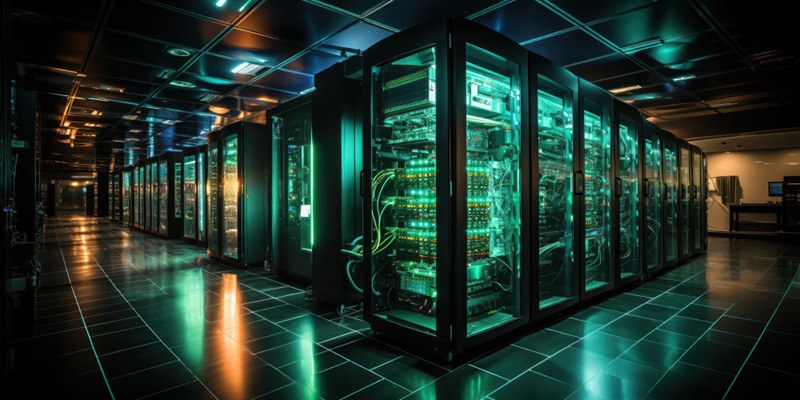In recent years, data centers have become increasingly energy-intensive, requiring large amounts of electricity for cooling and maintaining optimal operating temperatures. However, advancements in technology and data center design have led to a new approach: running data centers at higher temperatures. This article aims to explore the benefits, challenges, and considerations involved in adopting this approach.
Enhanced Efficiency: Cooling Infrastructure at Higher Temperatures
Traditionally, data centers have been kept cool to prevent hardware overheating and ensure optimal performance. However, studies have shown that cooling infrastructure can operate more efficiently at higher temperatures. By raising the ambient temperature, data center managers can reduce their reliance on mechanical cooling systems, leading to significant energy savings and reduced operational costs.
Energy Savings: Reducing Cooling Energy Consumption
One of the most appealing aspects of operating data centers at higher temperatures is the potential for energy savings. For every 1°C increase in operating temperature, data centers can potentially experience a 2% to 5% reduction in cooling energy consumption. This reduction, when combined with the enhanced efficiency of cooling infrastructure, can result in substantial cost savings for data center operators.
Potential Risks: Thermal Failure and Time Considerations
While the benefits of higher temperature operation are compelling, there are potential drawbacks that need to be considered. The most obvious concern is the risk of thermal failure. Running data centers at higher temperatures means there is less time for temperatures to increase before the IT equipment could be at risk. Adequate planning and monitoring are essential to ensure that equipment operates within safe temperature limits.
Importance of Reliability: Considering Outages
If an outage occurs while running a data center at higher temperatures, the energy savings and reduced operational costs could be negated. It is crucial to have reliable backup power systems and cooling redundancy measures in place to mitigate the risk of downtime. A comprehensive risk analysis should be conducted to ensure that the potential benefits of higher temperature operation outweigh the risks.
Hardware Considerations: Impact on Replacement Cycle
Another consideration when running data centers at higher temperatures is the potential impact on the hardware replacement cycle. Higher temperatures can accelerate the aging process of IT equipment, resulting in a shorter lifespan. Data center managers must factor in these additional costs when evaluating the long-term feasibility of this approach.
Utilizing Advanced Software: Cadence DataCenter Design Software
To effectively analyze and optimize data center performance in higher temperature scenarios, advanced tools like Cadence DataCenter Design Software and the Insight Platform can prove invaluable. This software models complex thermals, cooling, and airflow using computational fluid dynamics (CFD) simulations, providing key insights into performance metrics. With this software, managers can virtually validate operational decisions before physical implementation, reducing the risk of costly mistakes.
Virtual Validation: Making Informed Decisions
By leveraging simulation insights, managers can make informed decisions regarding data center design and operations. Different layouts can produce radically different results in terms of performance, and a virtual platform enables operators to test conditions and avoid stranded capacity. This virtual validation process minimizes dependence on trial and error and maximizes the chances of success.
Optimizing Performance: Considerations for Layout and Capacity
The ability to test and optimize different layout scenarios virtually opens up opportunities for performance improvement. By making data-driven decisions, operators can optimize airflow, cooling distribution, and equipment placement, ensuring the best possible performance while running the data center at higher temperatures.
Data Center Digital Twin Technology: A Data-Driven Solution
An emerging technology in the data center industry is the use of data center digital twin technology. This innovative solution provides a real-time virtual replica of the physical data center, allowing operators to monitor and analyze performance metrics. With this data-driven approach, operators can safely increase the heat within data centers, continually monitoring and adapting to ensure the ideal operating conditions.
Running data centers at higher temperatures can lead to significant energy savings, reduced operational costs, and enhanced cooling efficiency. However, careful planning, risk analysis, and the use of advanced software tools are crucial to ensuring the success and reliability of this approach. By leveraging digital twin technology and making data-driven decisions, operators can optimize performance while minimizing the risks associated with higher temperature operation. As the demand for data centers continues to rise, this innovative approach promises to be a valuable solution for the industry’s growing energy consumption concerns.

